Sushi comes in all shapes and sizes and every single one is more delicious than the last. But sushi had to start somewhere, and that beginning was with maki sushi.
But what is maki sushi? Beyond being a fundamental component of Japanese cuisine, it has become the most recognizable form of sushi worldwide.
In this blog, we will go over:
- What is maki sushi?
- Common ingredients in maki
- Types of maki sushi rolls
So hold on, because it’s time for a deeper dive into maki sushi.
What is Maki Sushi?
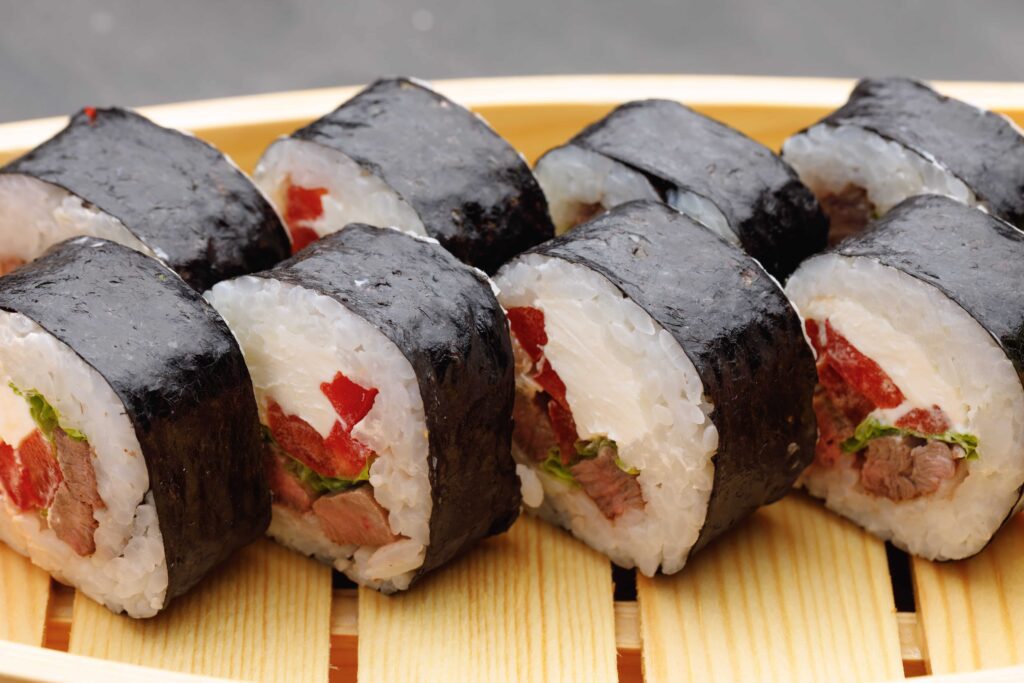
Maki sushi is the most popular and widely recognized type of sushi worldwide. When people think of sushi, maki often comes to mind first.
It consists of vinegared rice and various fillings rolled in a sheet of nori (seaweed), then sliced into bite-sized pieces. The versatility of maki allows for a wide array of ingredients, including seafood, vegetables, and even tropical fruits, catering to diverse palates.
Meaning
The term ‘maki’ highlights the rolling technique essential to its preparation. In Japanese, ‘makizushi’ combines ‘maki’ (roll) and ‘zushi’ (sushi), literally meaning ‘rolled sushi.
This term highlights the distinctive method of assembling the dish, setting it apart within the broader sushi category.
How Maki Differs from Other Sushi
Sushi encompasses various styles, each with unique preparation methods.
Nigiri
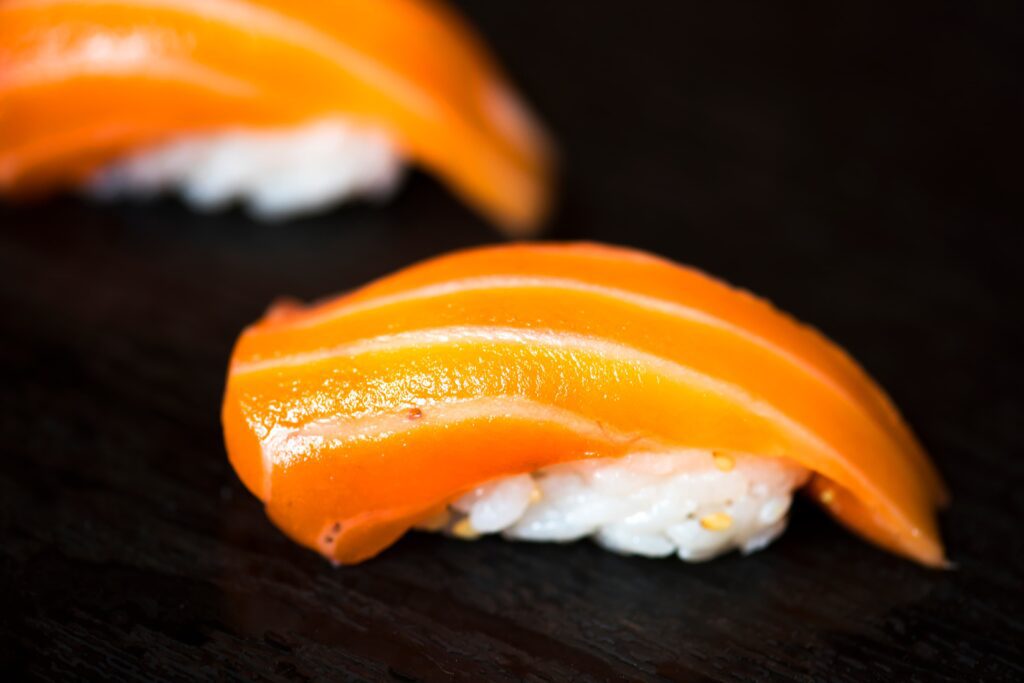
Nigiri is another popular version that likely comes to mind when you think of sushi. This type features a slice of fish or seafood atop an oblong mound of vinegared rice, often secured with a thin strip of nori.
Sashimi
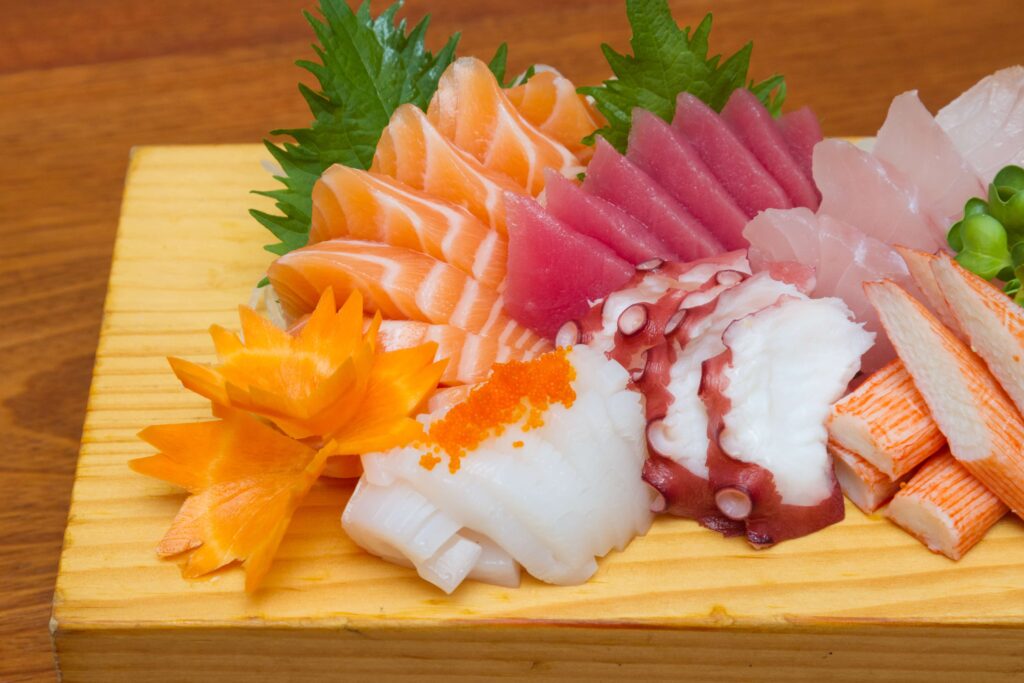
Sashimi is the most simplified version of sushi. Unlike nigiri or maki, it consists solely of thinly sliced raw fish or seafood, served without rice.
Maki
Maki stands out for its rolled form, where rice and fillings are wrapped in nori and then sliced into bite-sized pieces, making it easy to pick up and eat with chopsticks.
While nigiri and sashimi focus on the purity of the fish, maki offers a balanced combination of rice, fillings, and seaweed, providing a diverse taste experience.
Common Ingredients
Maki sushi appeals to a wide audience due to its adaptability and customization, accommodating a vast range of ingredients.
The Essentials
Rice
This short-grain rice is seasoned with rice vinegar, sugar, and salt, giving it the slightly sticky texture and tangy flavor crucial for maki sushi.
Nori
Nori is thin sheets of dried seaweed that serve as the outer wrapping, imparting a subtle oceanic taste and holding the roll together.
Vegetables
Common additions include cucumber, avocado, and pickled radish (takuan), offering crispness and freshness that complement other fillings.
Popular Options
Fish (Raw or Cooked)
Tuna (maguro) and salmon (sake) are traditional choices, prized for their rich flavors and smooth textures.
Cooked or Cured Varieties
Unagi (grilled eel) and imitation crab (kanikama) provide alternative flavors for those preferring cooked seafood.
Traditional vs. Modern Ingredients
Traditional maki often features simple combinations like cucumber (kappamaki) or pickled plum with shiso leaf (umeshiso maki).
Contemporary variations have introduced ingredients such as cream cheese, spicy mayonnaise, and tempura-fried components. These changes reflect regional tastes and showcase creative culinary innovations from around the world.
Types of Maki Sushi Rolls
As with all sushi, there are many types of maki rolls, each with distinct characteristics, including ingredients, preparation, and rolling technique.
Hosomaki
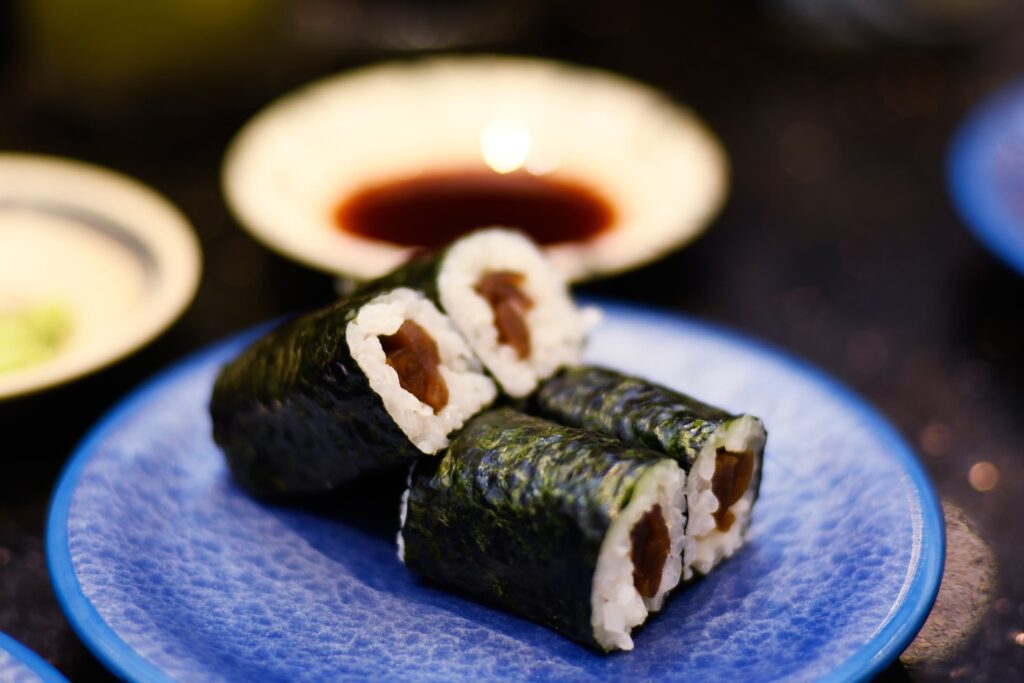
Hosomaki, or “thin rolls,” are slender cylinders typically containing a single filling, such as tuna, cucumber, or pickled radish. The minimalistic approach highlights the flavor of the primary ingredient.
Futomaki
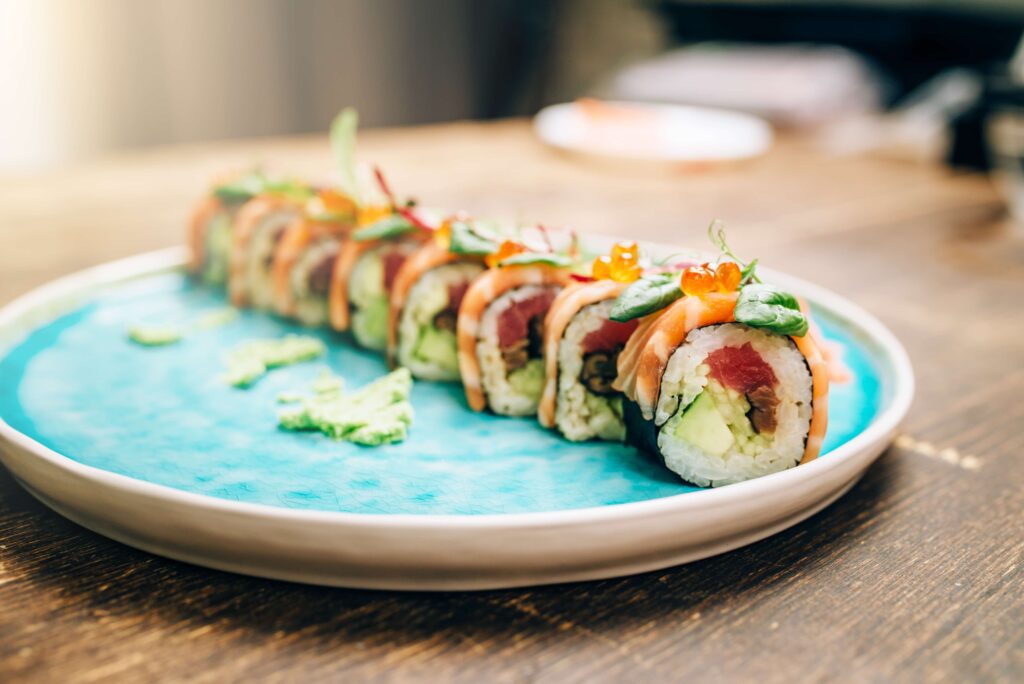
Futomaki, meaning “thick rolls,” are larger and encompass multiple fillings, often combining vegetables and cooked seafood. These colorful rolls are popular during festivals and celebrations, showcasing a variety of textures and flavors in each piece.
Uramaki
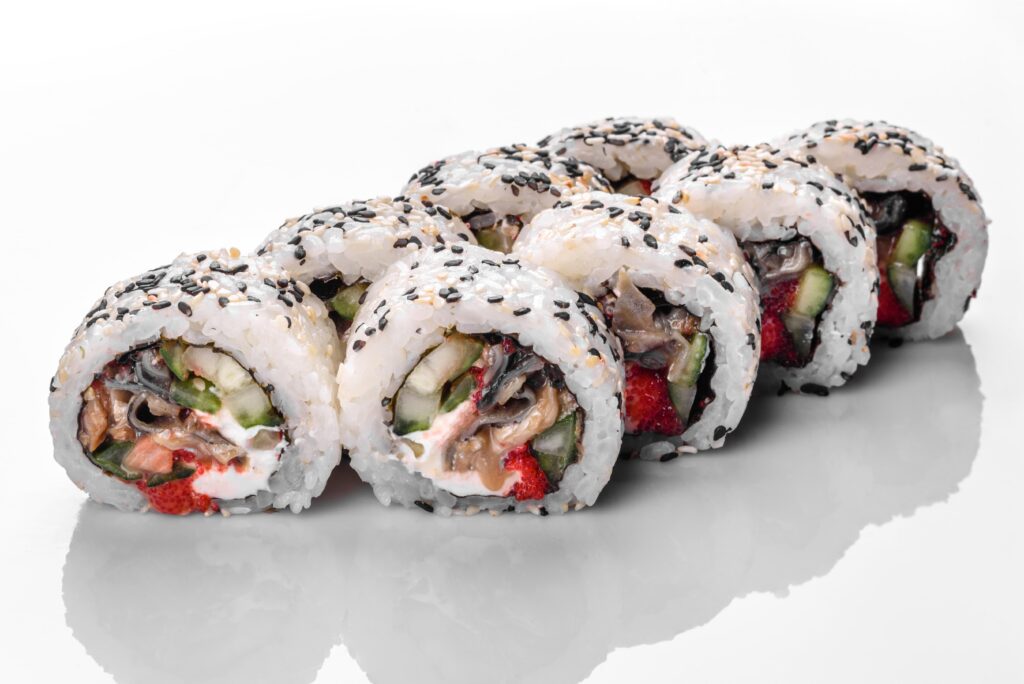
Uramaki, known as “inside-out rolls,” invert the traditional structure by placing the rice on the exterior and the nori inside. This style often features multiple fillings and is commonly adorned with sesame seeds or fish roe on the outer layer, enhancing both visual appeal and taste.
Temaki
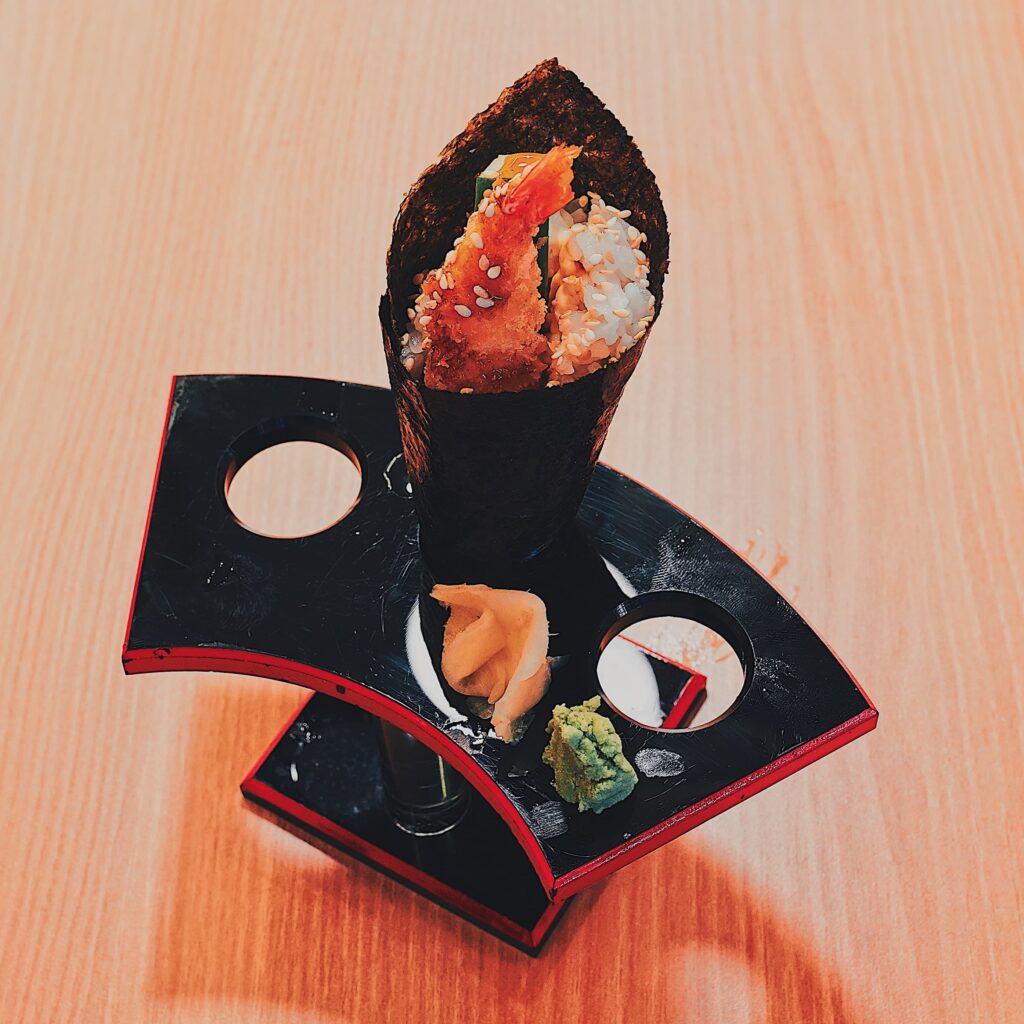
Temaki, or “hand rolls,” are cone-shaped portions of nori filled with rice and various ingredients. Designed to be eaten by hand, temaki offers a casual and interactive dining experience, with fillings often extending from the open end of the cone.
By understanding the nuances of maki sushi, from its foundational elements to its diverse forms, one can fully appreciate the artistry and cultural significance embedded in this beloved Japanese dish.
Try All Types of Maki Sushi at Kobé Japanese Steakhouse
Now that you know all about the most popular form of sushi, it’s time to order! Check out all of the sushi offerings at Kobé Japanese Steakhouse! From traditional sashimi to our specialty volcano roll, Kobé can serve you no matter what you’re craving.
Enjoy sushi while taking in our world-renowned hibachi dining experience. Book your reservation today!